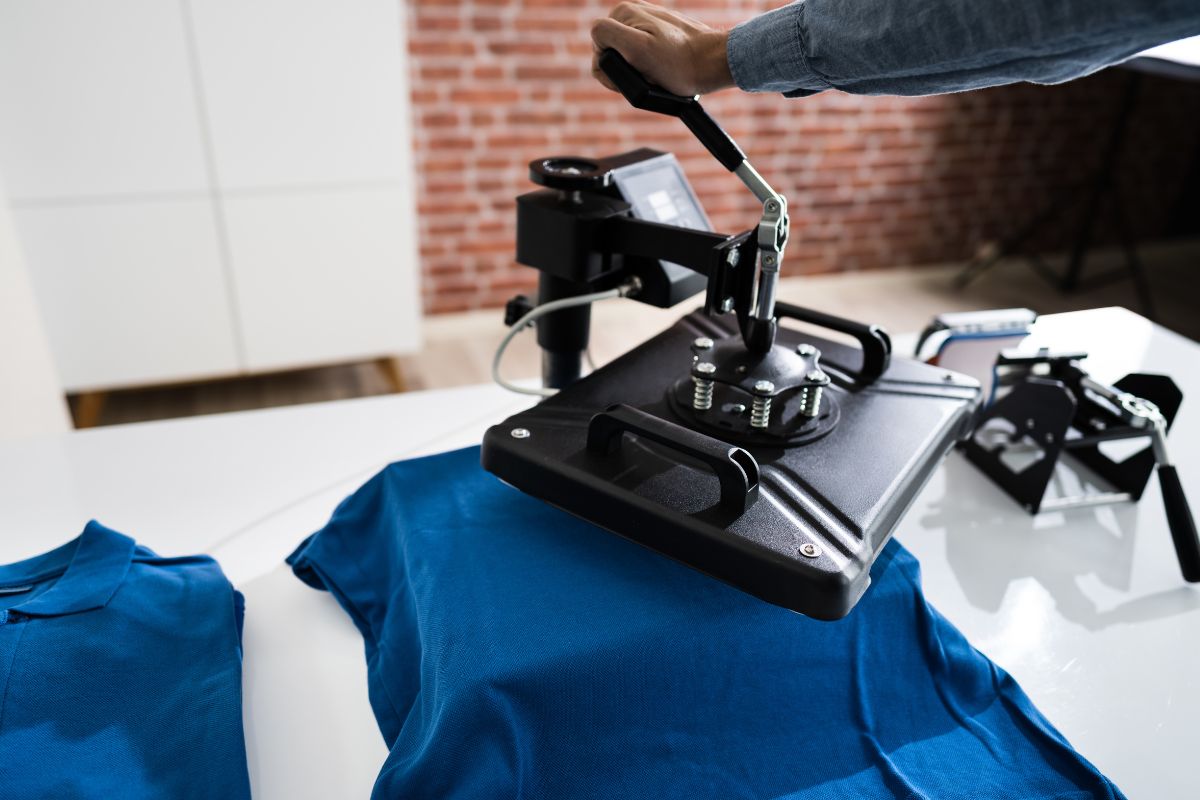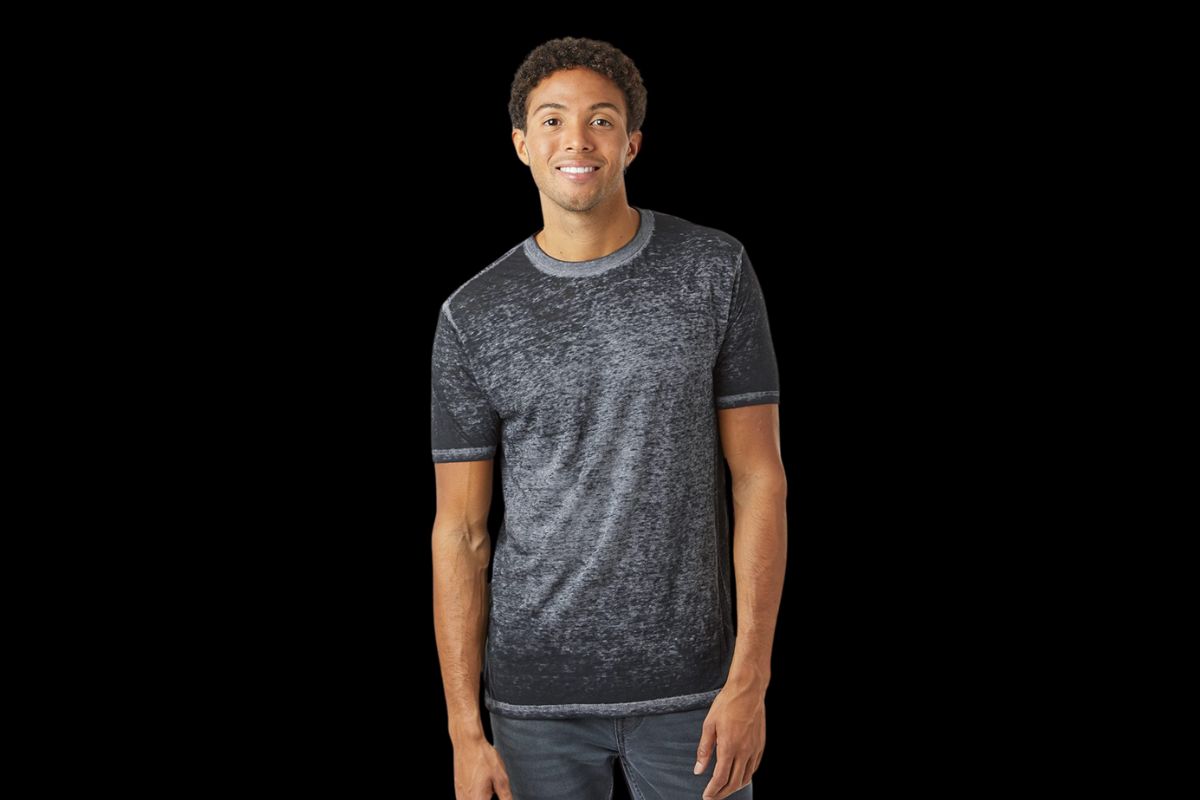When choosing between screen printing and digital printing, consider what best suits your project. Screen printing, a traditional technique that has been around for ages, thrives on its ability to produce vibrant, durable colors and is especially cost-effective for large orders. It requires the creation of stencils—screens through which ink is pressed onto the material—making it a good choice for simpler designs that make use of a limited color palette.
On the other hand, digital printing, sometimes referred to as Direct to Garment (DTG), shines in delivering highly detailed and color-accurate results. It is a newer technique that works much like your desktop printer, applying ink directly onto the fabric. This method allows for intricate designs with a wide range of colors and is particularly advantageous for small quantity orders where the level of detail is paramount.
Understanding these differences is crucial as you decide which printing method will deliver the results you desire. Whether you prioritize the durability and vibrancy of screen printing or the detail and versatility of digital printing, your choice should align with the scale, material, and expected outcome of your printing project.
Understanding Screen Printing
When you explore the world of printing options, screen printing stands out for its durability and vibrancy. It’s a technique that allows you to create bold, lasting designs on a variety of materials, using a combination of traditional craftsmanship and specific supplies.
The Basics of Screen Printing
Screen printing is a printing technique where you press ink through a mesh screen onto a substrate, except in areas made impermeable to the ink by a blocking stencil. Each color in your design requires a separate screen, making the process best suited for designs with fewer colors.
Key Components:
- Screen (Mesh Screen): Your screen serves as the ‘canvas’ where your image will be printed.
- Emulsion: Applied to the mesh screen to create the stencil.
- Ink: Typically either plastisol ink, known for its durability and color vibrancy, or water-based inks, praised for their soft texture and eco-friendliness.
Materials and Equipment in Screen Printing
To screen print, you need specific materials and equipment, most notably:
- Screens: Choose a mesh count based on the complexity of your design and type of ink.
- Stencils: Create your stencil using a light-sensitive emulsion.
- Inks: Decide between different ink types based on finish and fabric compatibility.
- Squeegee: Utilized to evenly spread the ink across the screen.
- Printing Press: Manual or automatic presses are available depending on production needs.
Common Substrates:
- Fabrics: A popular choice, with cotton and polyester being frequent picks.
- Paper and Cardboard: Often used for posters and stationary.
- Plastics and Metals: Typically requiring special inks.
Tools and Supplies Checklist:
| Item | Purpose |
| Mesh Screen | To apply the stencil and pass ink through |
| Emulsion | To create an imprint of your design on screen |
| Squeegee | To press the ink through the mesh screen |
| Plastisol Ink | For vibrant, durable prints |
| Water-Based Ink | For a softer feel and environmental benefits |
Screen Printing Process
The screen printing process involves several steps, where precision and attention to detail are key:
- Preparing the Screen: Coat the mesh screen with light-sensitive emulsion and let it dry.
- Exposing the Screen: Place your design on the screen and expose it to bright light to harden the emulsion, leaving a stencil behind.
- Setting up the Press: Secure the screen onto the press and align the substrate.
- Applying the Ink: Use the squeegee to push ink through the exposed areas of the screen onto the substrate.
- Curing the Print: Dry the ink, often with a heat source to ensure its durability.
To understand the complexity and potential of screen printing, you must consider each step as part of a larger creative process. Mastery of screen printing means knowing how to manipulate these variables to achieve your desired result.
Understanding Digital Printing
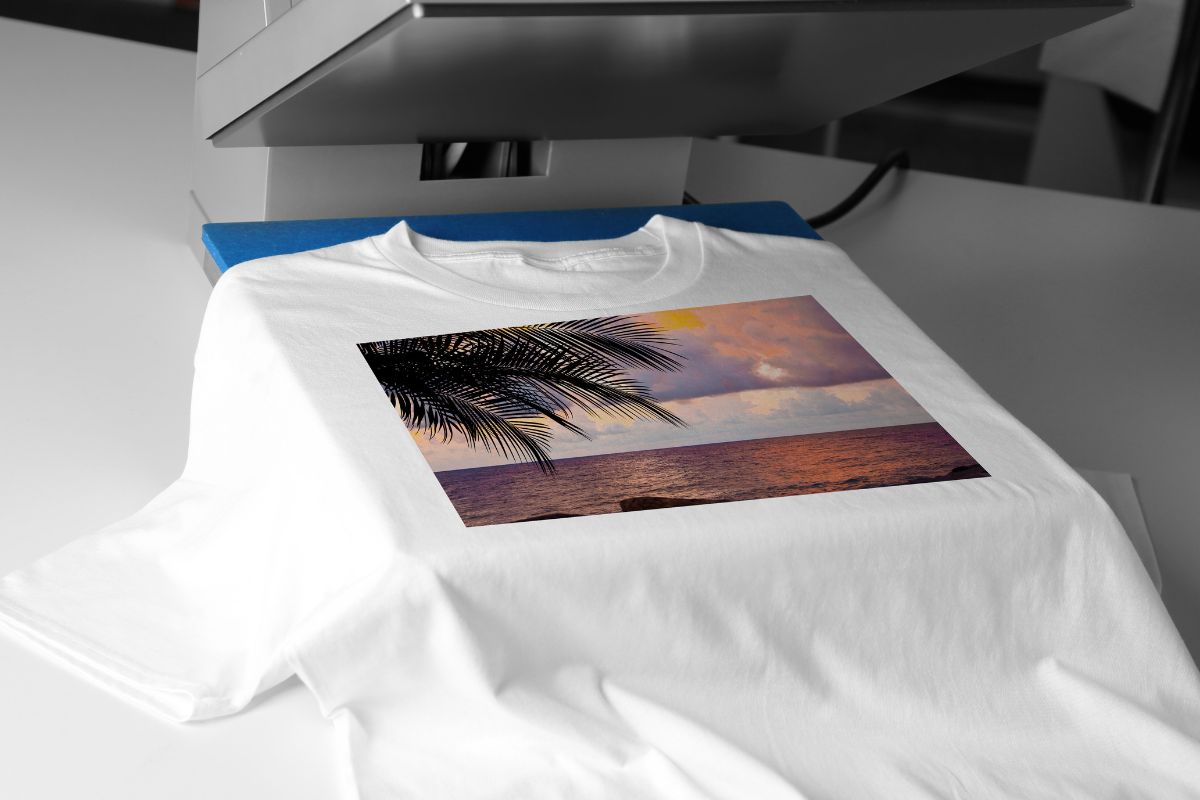
In this section, your understanding of digital printing will expand as you explore its overview, the technology behind it, and the intricate process involved.
Digital Printing Overview
Digital printing is a modern method of production that allows you to print directly from a digital file to a variety of media. It’s known for its quick setup, which makes it an excellent option for small to medium-sized print runs and when you need precise, detailed prints with a broad color palette.
Digital Printing Technology
Direct-to-Garment (DTG) and inkjet are prominent technologies within digital printing. DTG focuses specifically on textiles, using inkjet technology to print designs directly onto clothing. An inkjet printer, on the other hand, propels tiny droplets of ink onto the substrate—a material onto which printing is done, such as paper, cardboard, or textiles. This method excels at delivering detailed images and a wide spectrum of colors.
Key Components in Digital Printing Machinery:
- Print Head: Releases ink in controlled patterns
- Ink System: Contains various colors for accurate reproductions
- Substrate Handling: Determines the media positioning during the print
Digital Printing Process
Digital printing eliminates the need for traditional mechanical steps like making films and plates. You start by preparing a digital file, which often includes images and text. This file is then processed by your computer and sent to the digital printer. Here’s a simplified view of the steps you’d typically follow:
- Design Creation: Use graphic design software to create your digital artwork.
- File Preparation: Ensure the file is in the correct format and resolution.
- Printer Setup: Select the material (or substrate) and adjust the printer settings.
- Printing: Initiate the print command for transferring your design onto the substrate.
- Post-processing: Let the ink dry and perform any required finishing tasks.
Each step must be meticulously managed to ensure the highest quality output, whether you’re printing onto paper, a canvas, or acustom t-shirt. Digital printing offers versatility in material choice and is efficient for on-demand printing, prototype samples, and custom prints.
Comparing Print Quality
| Print Quality Aspect | Digital Printing | Screen Printing |
|---|---|---|
| Color Accuracy | High color accuracy, able to reproduce intricate details, gradients, and photographic images accurately. | Limited color accuracy, especially with complex designs or gradients. |
| Detail Reproduction | Excellent for reproducing fine details, intricate patterns, and small text with clarity and precision. | Can struggle with reproducing fine details, particularly in designs with small text or intricate elements. |
| Consistency | Consistent print quality across all copies, ensuring uniformity in colors and design elements. | Print consistency may vary slightly between copies due to factors like ink viscosity and screen tension. |
| Color Vibrancy | Vibrant and saturated colors, with the ability to achieve a wide color gamut and rich hues. | Colors may appear slightly duller compared to digital printing, especially in large solid areas. |
| Gradations | Capable of rendering smooth and seamless gradients, transitioning between colors seamlessly. | Gradations may appear slightly less smooth, with visible halftone dots in gradient areas. |
| Ink Thickness | Ink lays flat on the surface, resulting in a thinner ink layer that feels smoother to the touch. | Ink can be thicker, providing a slightly raised texture on the printed surface, which some may find appealing. |
| Texture | Produces a smooth and consistent texture on the printed surface, suitable for a variety of applications. | Can exhibit a textured feel due to the thicker ink layer, adding a tactile element to the printed material. |
| Image Resolution | Prints with high resolution, providing sharp and clear images even at close viewing distances. | Resolution may be limited by the mesh count of the screen, affecting the clarity of fine details in the print. |
| Substrate Compatibility | Compatible with a wide range of substrates, including paper, textiles, plastics, and more. | Versatile in substrate compatibility, suitable for printing on various materials such as fabric, paper, wood, metal, etc. |
When considering screen printing versus digital printing, your main concerns will likely revolve around the quality of the print in terms of color, definition, and durability.
Color and Detail in Prints
Screen Printing: You’ll find that screen printing offers exceptional color vibrancy with a high degree of color saturation, mainly because the ink is laid down in thicker layers. This method tends to hold colors well, especially ondarker fabrics. However, matching specific colors can be challenging due to the limitations in the range of inks.
Digital Printing: On the other hand, digital printing excels in color match and reproducing intricate designs with multiple colors. The digital process is precise, allowing for sophisticated gradients such as halftones and a wider color spectrum.
Resolution and Image Clarity
Screen Printing: While adept at producing bold and solid colors, screen printing is not the ideal choice for designs requiring high levels of detail or very fine lines.
Digital Printing: Resolution and clarity are strengths of digital printing. Your printed images will exhibit sharp, crisp details and clarity, suitable for nuanced graphics and photo-realistic prints.
Durability of Prints
Screen Printing: If durability is your priority, the heavier ink deposition in screen printing results in prints that endure numerous washes, which is why it is often used forapparel that requires long-term use.
Digital Printing: Digital prints, while versatile and high-quality, may over time show wear faster than screen prints. They are typically better suited for items that won’t undergo heavy use or frequent washing.
Color Considerations
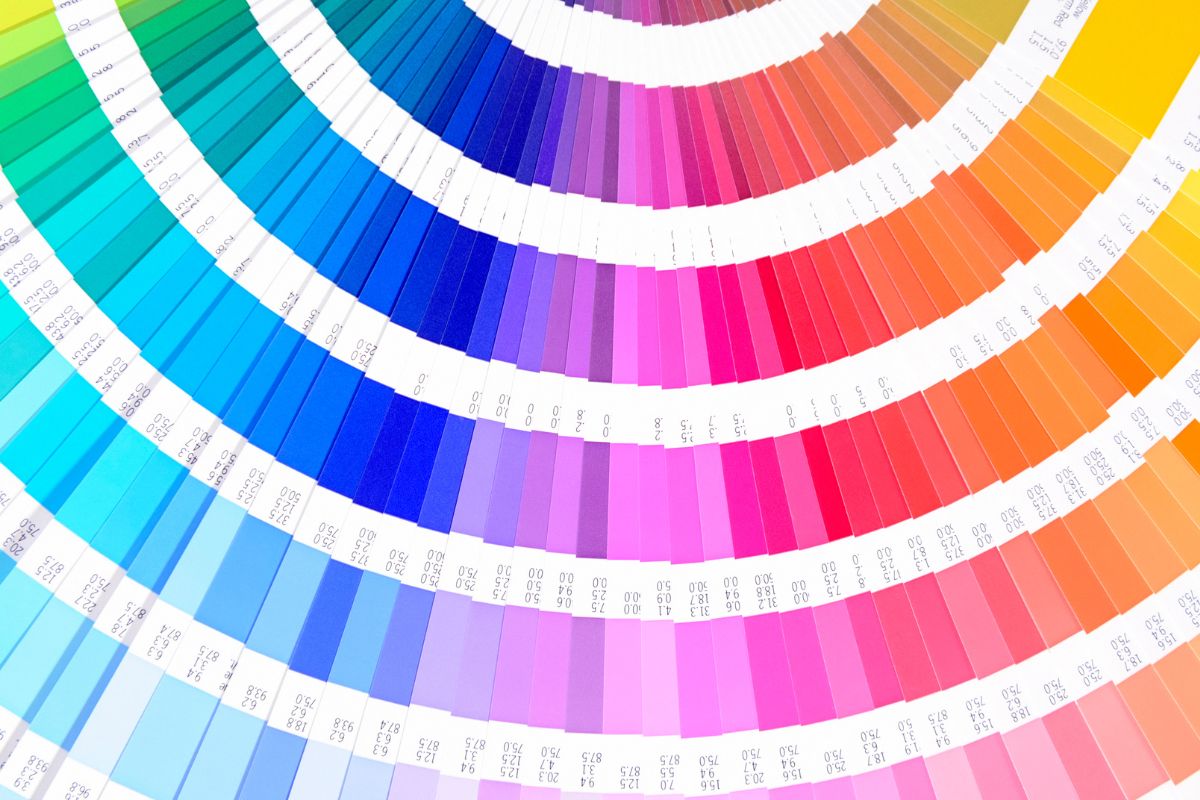
When comparing screen printing and digital printing, the way colors are produced and replicated is a key differentiator influencing the final appearance of your print. Understanding these nuances ensures you choose a method that aligns with your project’s color demands.
Color Matching Techniques
In screen printing, color precision is achieved by mixing inks before application, often using the Pantone Matching System (PMS). This means that if your design requires an exact shade, like a specific red or green, screen printing can more reliably meet that need. On the other hand, digital printing uses a four-color process, combining cyan, magenta, yellow, and black (CMYK) in varying amounts to create a wide range of colors. This method works well for images with gradients or a full color spectrum but can sometimes struggle with exact PMS color matching.
Using Full Color Spectrum
Digital printing shines when it comes to utilizing the full color spectrum. It effortlessly handles complex images with multiple colors and subtle gradients. Digital printers can reproduce detailed designs that include colors like vibrant oranges or subtle greys without requiring a separate screen for each color. Screen printing typically has limitations with gradients and can require additional screens for adding more colors, which might not be as seamless as the gradient production capability of digital printing.
Cost and Efficiency Factors
The cost and efficiency of screen printing versus digital printing are influenced by the specifics of your project. Your choices will impact the budget and turnaround time.
Setup Costs and Printing Speed
Screen Printing: It requires the creation of separate stencils for each color; hence, initial setup costs are higher but fixed. This means your cost per unit decreases significantly when you’re printing in bulk. The process is relatively fast after setup, making it efficient for large orders.
Digital Printing: There’s no need for stencils, which means practically no setup costs and a quicker start. However, digital printers generally work at a slower speed. This can be ideal for small, customized orders where speed is not as critical.
Evaluating the Cost-Effectiveness
When you analyze cost-effectiveness, consider the break-even point between the two methods:
- Digital Printing is more cost-effective for small to medium-sized runs due to lower initial costs.
- Screen Printing becomes more affordable as the quantity increases, with the setup cost being diffused across a higher number of garments.
For complex designs, digital printing may also be more cost-effective due to the level of detail it can achieve without the need for multiple screens.
Bulk Orders and Economies of Scale
Bulk Orders:
- With screen printing, the more you print, the more you save. It’s geared toward high-volume orders where the unit cost can become very low.
- Digital printing might not see the same level of reduced cost with bulk orders due to the slower printing speed and consistent running costs.
Economies of Scale:
- Screen printing offers significant economies of scale, making it ideal for large quantities.
- Digital printing is less sensitive to scale, maintaining a steady cost, which often translates to a higher per-unit price for large orders.
Choosing the right method for your project is about balancing these factors to meet your needs in terms of efficiency and affordability.
Suitability for Materials
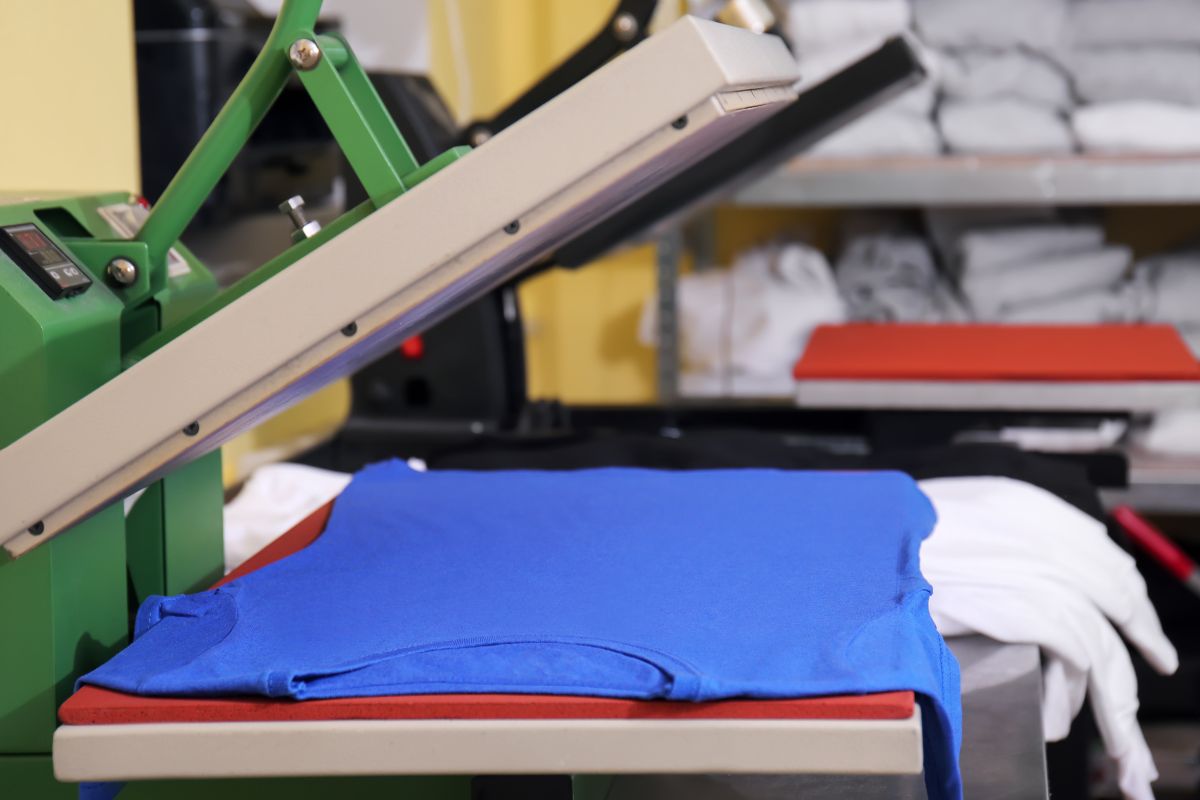
When selecting a printing method, it’s crucial to consider the material you’re working with. Different materials interact uniquely with screen and digital printing techniques, affecting the print’s quality and longevity.
Textile and Fabric Compatibility
Screen Printing
- Fabrics: Works well on a variety of textiles including 100% cotton, polyester, and synthetic fabrics.
- T-Shirts: Ideal for bulk t-shirt orders due to its ability to produce vibrant and durable designs.
- Technique: Uses mesh screens, making it easier to print on textile surfaces, but requires a different screen for each color.
Digital Printing
- Fabrics: Best suited for detailed and intricate designs on both light and dark fabrics.
- T-Shirts: Offers a softer touch on t-shirts, which can be advantageous for small orders or designs with multiple colors.
- Technique: More compatible with delicate fabrics where minimal pressure is required during the printing process.
Printing on Alternative Substrates
Screen Printing
- Substrates: Can print on a broader range of non-textile substrates, including wood, metal, and plastic.
- Flexibility: The ink used can adhere to various materials, making it a versatile option for printing on unconventional surfaces.
Digital Printing
- Paper: Excellently suited for high-resolution prints on paper for items like posters and flyers.
- Limitations: The range of alternative substrates for digital printing may be limited when compared to screen printing due to the precision required by the print heads.
Applications and Use Cases
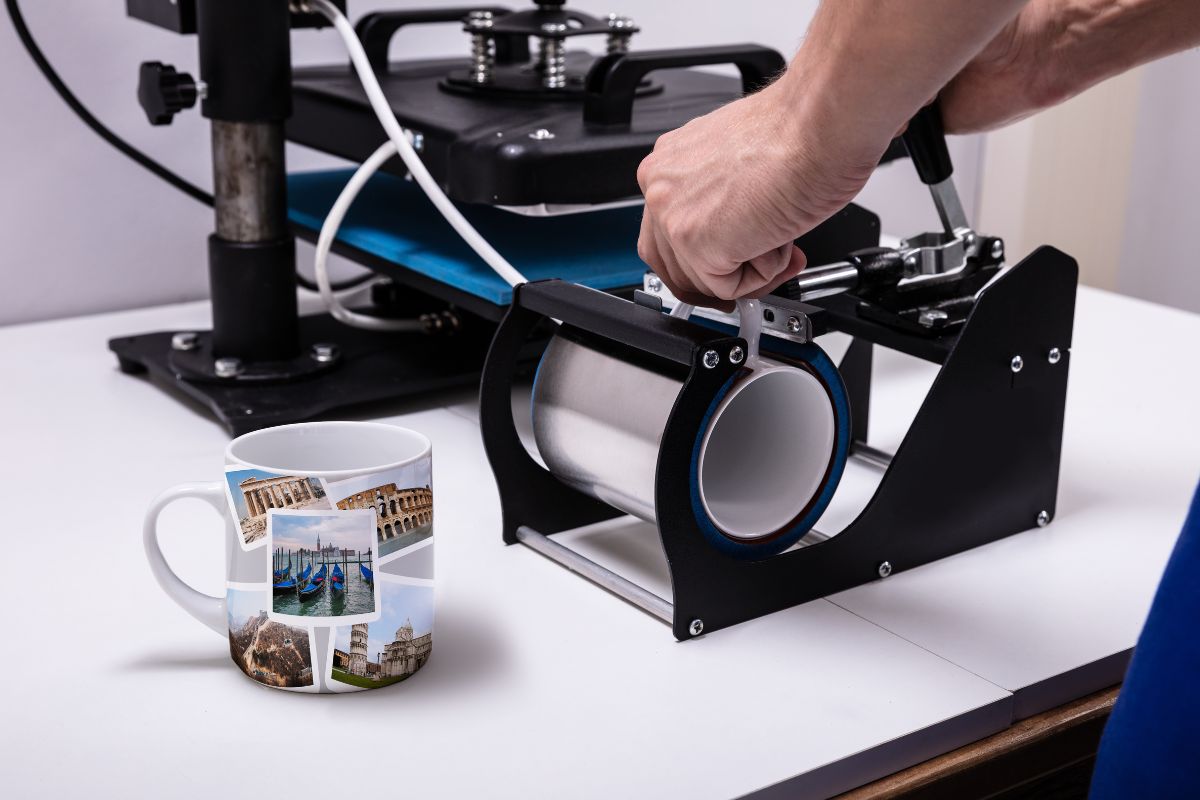
In the realm of custom printing, your specific application greatly influences whether screen printing or digital printing will serve your needs best. Whether you’re seeking to produce clothing,promotional items, or unique artwork, choosing the right printing technique is crucial to achieve the desired outcome.
Clothing and Custom Apparel
For custom apparel, especially t-shirts, screen printing is often your go-to technique for larger orders. Its ability to deliver vibrant and durable designs makes it the cornerstone of the custom apparel industry. The vintage look and soft feel of screen-printed garments are highly sought after. However, if your focus is on smaller quantities or you require detailed, multi-colored designs, digital printing may be more suited. Digital printing on clothing is practical for lightweight fabrics where a softer print is required.
Packaging and Promotional Items
When it comes to packaging and promotional items like mugs or tote bags, digital printing allows for high-detail and color accuracy. You can cost-effectively produce small runs with unique artwork for each item, making digital print preferable for promotions where ROI is essential. However, for bulk orders where each piece features the same design, screen printing could reduce your costs while offering long-lasting results.
Specialty Projects and Artistic Creations
For specialty projects and artistic creations where every piece is meant to be a standout, digital printing provides the special effects and intricate details that your project might need. This method is ideal for items that benefit from color accuracy and fine details. Conversely, screen printing can offer a unique, textured feel, often desired in the art world for a vintage look. It’s especially relevant if you’re working with specialty inks or materials that require the thickness and layering possible with screen printing.
Advancements and Trends
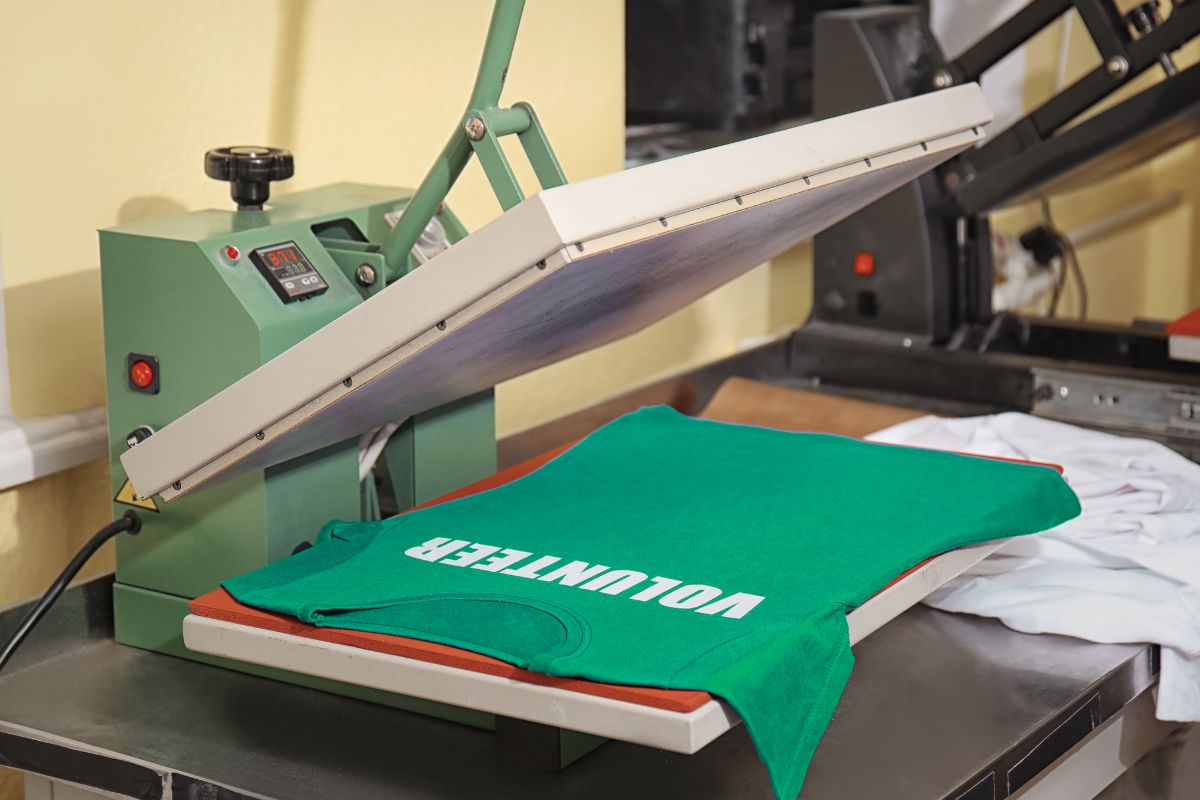
In this section, you’ll explore the notable advancements in screen and digital printing, and examine how eco-friendly practices are being implemented in the industry.
Innovations in Printing Techniques
In recent years, screen printing technology and digital printing have both seen substantial innovations. You’ll find that digital printing has evolved to allow for hyper-personalization, where every aspect of a print product can be tailored to customer preferences, not just text but images and graphics as well. This is partly due to advancements in color matching technology, such as the nuanced use of Pantones, resulting in color-accurate prints.
As for screen printing, simulated process technology allows for a wider color spectrum and finer detail in designs. Combined with the continued digitalization and automation of the screen printing process, these advancements have led to improved efficiency, precision, and the ability to produce high-fidelity prints at a faster pace.
Eco-Friendly Practices in Printing
The adoption of eco-friendly practices within both digital and screen printing is on the rise. For screen printing, this includes the use of water-based inks over plastisol, which are less harmful to the environment. Additionally, there’s movement towards:
- Reducing Waste: The industry is focusing on minimizing material waste and improving recycling processes during production.
- Energy Efficiency: Advances in equipment lead to more energy-efficient machines that require less power to operate.
Digital printing is inherently more eco-friendly due to its:
- Less Ink Usage: It often uses less ink than traditional screen printing.
- On-Demand Printing: This minimizes overproduction and waste, as items are printed when needed and in specific quantities.
Practical Considerations
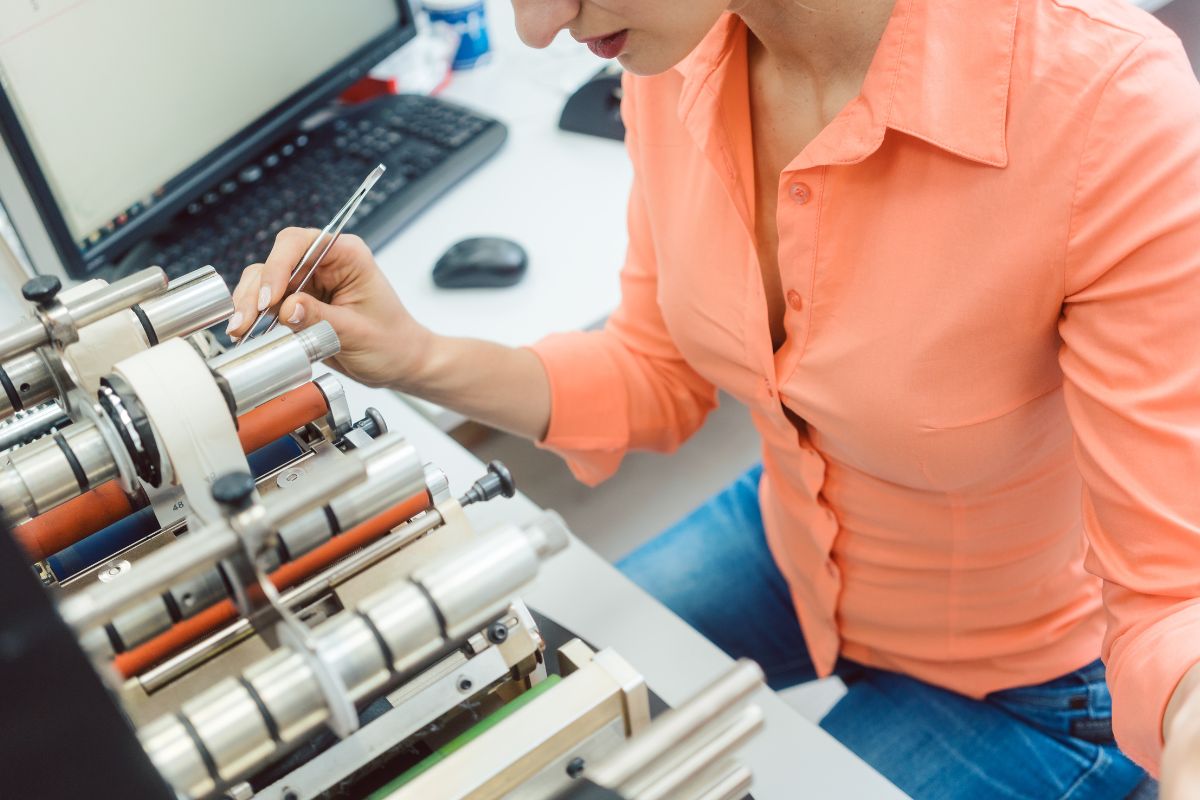
When you choose between screen printing and digital printing, you need to consider how labor intensity, machine upkeep, and speed of delivery align with your project needs.
Labor and Skill Requirements
Screen printing is labor-intensive and requires a high level of skill to produce consistent results, especially for complex designs or large orders. You’ll need trained professionals to manage the process well. Digital printing, meanwhile, is more straightforward and requires less manual labor, making it more suitable for smaller, more detailed orders.
Screen Printing:
- High labor and skill required for setup and execution
- Ideal for simple designs on large orders
Digital Printing:
- Reduced labor intensity
- Better for detailed designs, even on small quantities
Maintenance and Upkeep
Maintenance of screen printing equipment is continual; screens, squeegees, and other tools need regular cleaning and care. Digital printing machines, while complex, often have automated maintenance cycles, yet professional machines still need timely checkups to ensure optimal performance.
Screen Printing:
- Regular cleaning: Screens and squeegees
- Periodic replacement: of screens and parts
Digital Printing:
- Primarily: automated maintenance
- Professional care: for machines to prevent breakdowns
Turnaround Time for Orders
For quick turnaround, digital printing generally provides faster completion of orders, especially if you are looking at smaller quantities. Screen printing’s setup is time-consuming, making it less expedient for one-off orders or prototypes. However, once the initial setup is complete, screen printing can be extremely quick and efficient for bulk orders.
Quick Turnaround:
- Digital Printing: Best for smaller quantities
- Screen Printing: Becomes efficient with larger quantities, making it more versatile for bulk demands
Remember, your specific needs define whether the swift nature of digital printing or the scalably fast screen printing approach is right for you.
Pros and Cons of Each Method
| Aspect | Digital Printing Pros | Digital Printing Cons | Screen Printing Pros | Screen Printing Cons |
|---|---|---|---|---|
| Setup Time | Quick setup with minimal preparation required. | Longer setup time for complex designs or multiple colors. | Longer setup time due to screen creation and color separations. | Not suitable for small print runs due to setup costs. |
| Cost Efficiency | Economical for small print runs due to minimal setup costs. | Cost per unit may be higher for larger print runs. | Economical for large print runs, with lower cost per unit. | Not cost-effective for small print runs due to setup costs. |
| Color Accuracy | High color accuracy, suitable for complex designs and photographic images. | Limited color accuracy, especially with complex designs. | Vibrant colors and solid coverage, suitable for simple designs. | Limited color options, especially for detailed designs. |
| Detail Reproduction | Excellent for reproducing fine details and intricate patterns. | May struggle with reproducing fine details, especially in small text. | Can achieve high levels of detail and clarity in designs. | Limited ability to reproduce fine details, particularly in small text. |
| Customization Options | Offers extensive customization options, including variable data printing. | Limited customization options, especially for small-scale variations. | Suitable for large-scale production with consistent results. | Limited customization options compared to digital printing. |
| Versatility | Compatible with a wide range of substrates, including paper, textiles, plastics, and more. | Limited substrate compatibility compared to screen printing. | Versatile in substrate compatibility, suitable for various materials. | Limited compatibility with certain substrates, such as paper. |
| Turnaround Time | Shorter turnaround time due to minimal setup requirements. | Longer turnaround time due to setup and drying/curing times. | Longer turnaround time due to setup and color registration. | Not suitable for rush orders or tight deadlines. |
| Durability | Durability may vary depending on ink and substrate; may not withstand frequent washing. | Offers excellent durability when using quality inks and proper curing methods. | Provides excellent durability, especially with quality inks and curing methods. | Durability may decrease over time with frequent washing. |
When considering screen printing and digital printing, your choice should align with your project’s demands regarding quantity, detail, efficiency, and versatility.
Screen Printing:
Pros:
- Vibrancy: You’ll get rich, saturated colors that pop, especially on dark materials.
- Durability: Prints are tough and withstand multiple washes, which is beneficial for apparel.
- Cost-effective for Bulk: If you need a high quantity, screen printing becomes more affordable.
Cons:
- Setup Time and Cost: The initial setup with stencils can be time-consuming and costly.
- Less Detail: Fine details may not appear as crisp compared to digital methods.
- Inflexibility with Color Changes: Each color needs a separate screen, so design adjustments can be cumbersome.
Digital Printing:
Pros:
- Detail: This method captures intricate designs and a wide spectrum of colors.
- Flexibility: Easily adjust designs without significant downtime or added cost.
- Small Runs: For smaller quantities, digital is cost-efficient since it requires less setup.
Cons:
- Cost per Unit: For large orders, digital printing is less economical than screen printing.
- Limited Fabric Choices: May not work as well on all fabric types compared to screen printing.
- Durability: Digital prints may fade faster over time and with repeated washing.
Your choice should hinge on the unique specs of your project – weigh the benefits of color vibrancy against the necessities of design intricacy and the scale of your print run.
Choosing the Right Method for Your Job
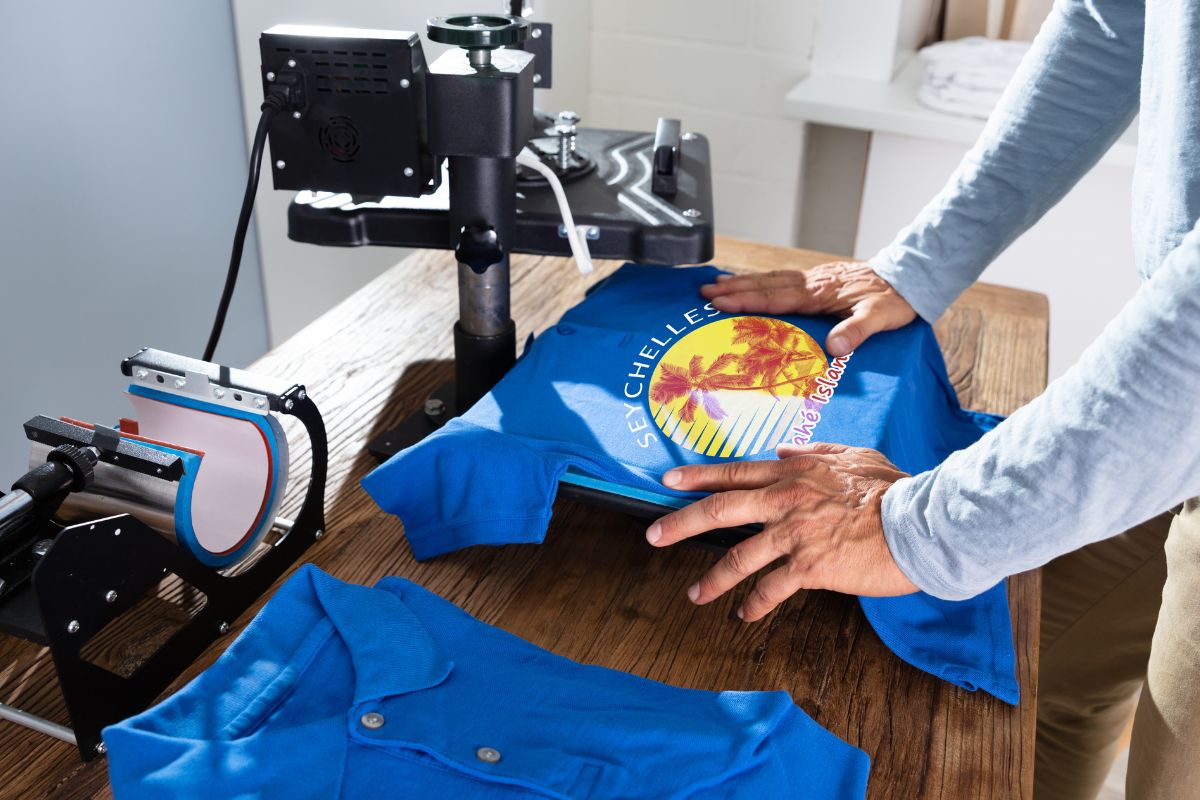
When selecting a print method for your project, it is crucial to consider the design intricacies, job specifications, and the most suitable technique to produce high-quality outputs that meet your expectations.
Assessing Design Complexity
Your design’s complexity is a pivotal factor in determining the print method. Traditional screen printing thrives with bold, vibrant designs and is less suited for intricate, multi-colored images where exact color matching is paramount. Digital printing, on the other hand, excels at reproducing detailed designs with a wide color spectrum, allowing for precise color reproduction right from the first item.
- Screen Printing: Ideal for simple designs with fewer colors.
- Digital Printing: Best for complex images requiring exact color matching.
Evaluating Job Specifications
Before deciding on a print method, carefully evaluate the job’s scale and material requirements. Screen printing may be more cost-effective for bulk orders due to lower per-unit costs at high volumes, while digital printing is generally more economical for small to medium-sized jobs. Consider the following:
- Quantity:
- Screen Printing: Economical for large volumes.
- Digital Printing: Suitable for smaller runs.
- Material:
- Screen Printing: Flexible with a variety of materials.
- Digital Printing: May have limitations on material compatibility.
Determining the Appropriate Technique
The appropriate technique hinges on your job’s intended durability and production timeline. Screen prints offer a long-lasting finish but necessitate a longer turnaround due to the need for drying time between colors. Digital prints can be produced more quickly and still deliver durability, albeit with differences in the feel and texture as compared to screen prints.
Durability:
- Screen Printing: Offers a thicker ink deposit, leading to longer-lasting designs.
- Digital Printing: Provides a thinner layer of ink with a softer touch.
By considering these factors, you can choose the most fitting print method that aligns with your specific job requirements.
Frequently Asked Questions
When choosing between screen printing and digital printing for T-shirt production, several factors come into play, including cost, durability, quality, and the nature of your order.
Which printing method is more cost-effective for T-shirt production, screen printing or digital printing?
For smaller quantities, digital printing tends to be more cost-effective due to its minimal setup costs. However, as the quantity increases, screen printing becomes more economical due to its scalability.
How do the durability and longevity compare between screen printed and digitally printed garments?
Screen printed garments typically offer greater durability and longevity. The ink in screen printing is absorbed deeper into the fabric, resulting in vibrant colors that last after numerous washes. Digital prints may fade more quickly over time, especially if the proper inks and substrates are not used.
In terms of quality, what are the main differences between screen printing and digital printing on fabric?
Digital printing offers detailed, color-accurate prints that are excellent for designs with intricate details. Screen printing, though, provides more vibrant colors and is better suited for high-volume orders with fewer colors.
What are the advantages and disadvantages of screen printing versus digital printing for custom clothing?
Screen printing is advantageous for its color vibrancy and suitability for large orders with the same design, but it has higher initial setup costs. Digital printing boasts lower setup costs and the ability to easily print complex designs but may lack in color vibrancy and is typically slower for large runs.
Can screen printing and digital printing be integrated, and if so, how are the results generally affected?
Screen printing and digital printing can be combined through hybrid machines, offering special effects and the benefits of both methods. This integration can lead to high-quality prints, with the digital aspect allowing for detailed design and screen printing enhancing color vibrancy and print locations.
For large volume orders, which printing technique is preferable, screen printing or digital printing?
For large volumes, screen printing is generally preferred due to its efficiency and cost-effectiveness for bulk orders. While digital printing is suitable for small runs, its slower production speed makes it less ideal for larger quantities.

